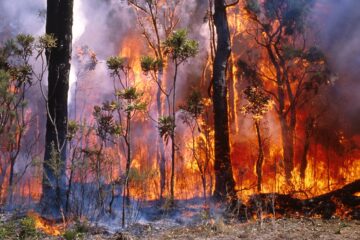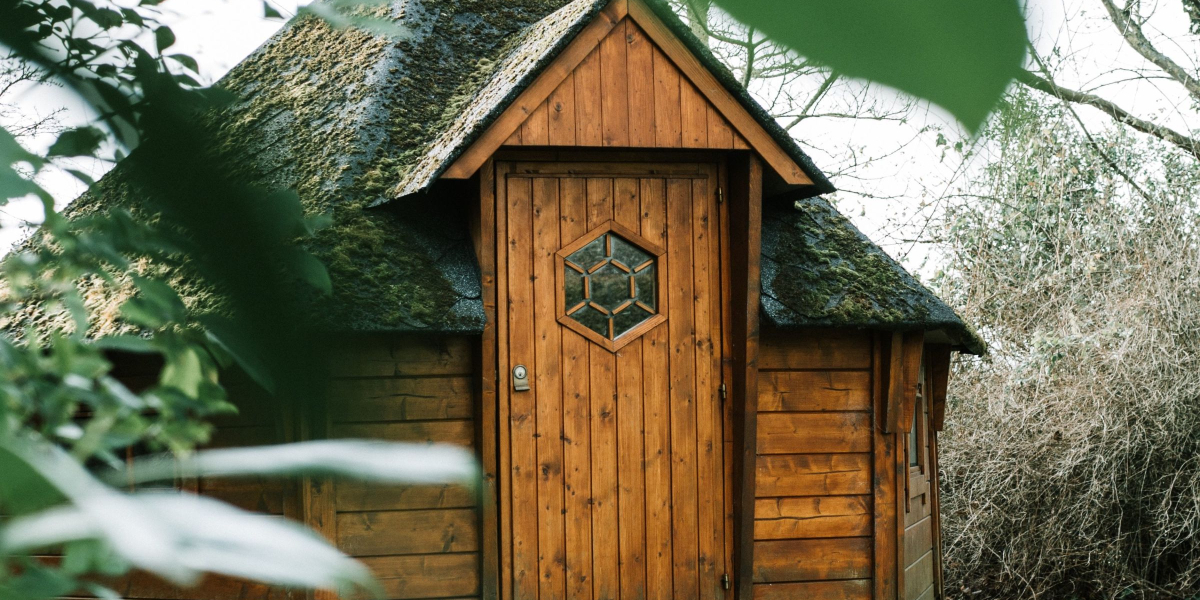Commercial buildings are subject to a variety of structural damages due to their size and complexity. Weather-related damage, poor construction practices, faulty roofing, poor maintenance, soil erosion and sinkholes, foundation problems, insect infestation and wood rot are some of the most common causes of structural damage in commercial buildings. These issues can lead to costly repairs or even complete replacement if not addressed quickly. In order to prevent such costly repairs or replacements from occurring, it is important to understand the potential causes of structural damage in commercial buildings as well as preventive measures that can be taken.
This article will explore the various common causes of structural damage in commercial buildings along with ways that these issues can be prevented or corrected. It will discuss weather-related damages such as flooding and hail storms; poor construction methods; inadequate foundation support; faulty roofing materials; soil erosion and sinkholes; insect infestation and wood rot; as well as aging infrastructure and lack of maintenance. Furthermore, it will identify strategies for preventing these issues from arising in the first place by providing an overview of risk assessment techniques, building codes standards, scheduled maintenance protocols and more.
Weather-Related Damage
The relentless onslaught of wind, rain, and other weather conditions can wreak havoc on commercial buildings, leaving them vulnerable to extensive structural damage. One particularly damaging aspect is wind induced vibrations which can cause a variety of problems such as loosening or cracking of masonry walls and foundations. Wind-driven hail causes another kind of damage by creating small dents and bruises in the building’s exterior surfaces that may lead to air leakage or water infiltration if left unchecked. Sun exposure also plays a role in degradation over time; ultraviolet radiation weakens the protective coating on some materials, leaving it more susceptible to wear and tear from other weather elements. Inadequate insulation can amplify these issues even further as moisture becomes trapped inside the building’s envelope. Ultimately, all these factors add up to create a situation where commercial buildings are at risk for serious structural damage caused by weather-related elements.
Poor Construction Practices
Neglecting best practices in construction can lead to structural deterioration of commercial properties. Poorly constructed buildings are more prone to damage and costly repairs due to a variety of factors, such as limited ventilation, inadequate insulation, improper framing, inadequate bolting, and inadequate waterproofing. Unventilated attics or crawl spaces can put strain on the structure if not properly insulated, which may cause internal temperatures to rise and increase the risk of moisture accumulation that contributes to mold growth. Improper framing can also weaken the load-bearing capacity of walls and roofs if nails or screws are not properly spaced out. Inadequate bolting leads to instability during strong winds or storms as loose bolts are unable to keep components securely attached together. Furthermore, sealing gaps between windows and doors with adequate waterproofing prevents water penetration from rain or snow that could eventually saturate wooden materials like rafters or trusses leading them to warp or rot over time. All these issues illustrate how important it is for contractors and engineers alike to ensure that all proper building regulations are met when constructing commercial buildings in order for them to be safe and durable over time.
Poor Maintenance & Aging Infrastructure
Failing to maintain aging infrastructure can result in costly repairs and safety hazards for commercial buildings. Poor ventilation, inadequate insulation, inadequate waterproofing, inadequate repairs, and inadequate inspections are all common causes of structural damage to these types of buildings. When ventilation systems fail, moisture from indoor activities such as cooking or bathing can accumulate in walls, floors, and ceilings resulting in the growth of mold and mildew. Furthermore, when insulation becomes old and degraded it no longer provides the necessary protection from extreme temperatures which can cause significant damage to building materials over time. Additionally, waterproofing is a critical component of any successful building maintenance program; without proper maintenance these systems may become ineffective leading to leaks that can cause rot or corrosion within the structure. Inadequate repair work on existing structures combined with insufficient inspection programs can lead to dangerous conditions such as falling masonry or weakened supports that could lead to a collapse in extreme cases. All these issues demonstrate how important it is for commercial buildings owners and managers to prioritize regular maintenance practices if they wish for their structures to remain safe and structurally sound for years to come.
Poor Site Drainage
Inadequate site drainage can lead to serious consequences, such as the erosion of foundations, if left unchecked. Poor drainage solutions, inadequate stormwater management, and poor design and maintenance of the drainage system are common causes of structural damage to commercial buildings. Excessive water around a building’s foundation can cause it to shift and crack over time due to hydrostatic pressure, resulting in significant structural damage. Furthermore, without proper drainage systems design or upgrades that take into account seasonal conditions like heavy rainfall or snowmelt, flooding can occur which can also lead to significant structural harm due to saturation of the soil around the foundation. To avoid these issues from occurring in the first place or becoming worse over time, regular maintenance and inspection of the existing drainage system is necessary in order for any necessary updates or repairs to be identified before they result in an emergency situation requiring costly repair work.
Faulty Roofing
Incorrect installation or maintenance of roofing systems can lead to serious consequences, such as foundational erosion. Inadequate ventilation and insufficient insulation are common causes of structural damage due to faulty roofing. Poor ventilation leads to excessive humidity which can cause wood rot and other forms of decay in the building’s components. Insufficient insulation also allows too much heat to escape from the building, leading to higher energy costs and condensation on walls and ceilings. Improper grading may also contribute to water pooling around a structure’s foundation, causing it to weaken over time. Lastly, any type of faulty installation or repair work may lead to leaks in the roof that can result in further damage down the road if not addressed immediately. All these issues must be regularly monitored and addressed by a professional contractor as part of regular maintenance for commercial buildings.
Soil Erosion & Sinkholes
Unabated soil erosion can lead to the formation of sinkholes, posing a risk to the safety and security of nearby structures. Sinkholes are caused by water dissolving limestone or carbonate rock below the surface. The resulting voids cause surface collapse which can damage nearby structures. To prevent this type of structural damage, corrosion prevention methods such as soil compaction should be implemented in order to reduce the effects of soil erosion. Additionally, seismic activity should be monitored so that any changes in ground structure beneath a commercial building can be detected quickly and addressed before a sinkhole forms. Furthermore, pest control is necessary to help reduce water damage which often causes sinkholes in commercial buildings due to untreated subterranean wood decay. Careful attention must also be paid when constructing new foundations or building additions near existing ones since underground disturbances can cause sinkholes too. Ultimately, proper maintenance is key for avoiding structural damage due to soil erosion and sinkholes in commercial buildings.
Foundation Problems
Frequent shifts in the earth’s surface can lead to instability in foundations of commercial buildings, potentially resulting in costly repairs. Water intrusion, foundation settling, soil compaction and seismic activity are major causes of structural damage to commercial buildings. These forces can cause major damage by shifting the foundation or compromising its support systems over time. Foundation settling is one of the common causes that leads to a decrease in the building’s structural integrity as it slowly moves downwards due to soil changes beneath. Soil compaction is another common cause that occurs when heavy objects compress the soil underneath a structure, leading to potential damage and cracking within walls and floors over time. Seismic activity and vibrations from earthquakes can also cause significant structural damage as these forces are strong enough to tear apart even large structures. All of these causes can lead to expensive repairs for commercial buildings if not addressed promptly.
Insect Infestation & Wood Rot
Left unchecked, insect infestation and wood rot can be like a cancer slowly eating away at the integrity of commercial buildings. Termites, carpenter ants, and other pests can cause significant structural damage to a building if not exterminated in a timely manner. Such damage is often difficult to detect until it is too late. Wood preservation techniques such as chemical treatments and physical barriers are necessary for long-term protection against pests. Mold prevention should also be part of any pest control strategy as mold growth often accompanies wood decay caused by termite damage. Moisture monitoring is essential to ensure that there are no areas where moisture accumulates and provides an attractive environment for pests and mold growth. To prevent these problems from occurring or exacerbating existing issues, regular pest extermination visits from licensed professionals should be scheduled with proper termite control measures being taken when needed.
Conclusion
Structural damage to commercial buildings can be costly and time-consuming to repair, yet they are preventable with proper construction methods, maintenance practices and due diligence. It is essential for owners, contractors and designers to be aware of the potential causes of structural damage in order to mitigate risk. Weather-related damage, poor construction practices, poor maintenance and aging infrastructure, faulty roofing and inadequate site drainage are all common contributors to structural issues. Furthermore, soil erosion and sinkholes as well as foundation problems resulting from insect infestation or wood rot may also cause extensive damage. While these situations can be difficult to foresee or avoid entirely, understanding the risks associated with each enables stakeholders such as architects and engineers to make informed decisions which may reduce long-term costs while protecting investments in a building’s future.


